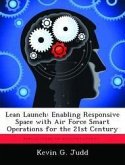The Future Combat System (FCS) is the foundation of Army transformation. One of the important aspects of this transformation is the ability to use vertical envelopment with mechanized forces. Design considerations for the planned vehicles include size and weight limitations for maneuver by air to envelop enemy forces with greater speed, lethality, protection, and precision. The airframes needed to carry the FCS on the battlefield have not been determined. Two conceptual views compete for structuring the air mechanization maneuver capability-airborne versus air assault. Which is selected should go a long way in determining which service should organize, train, and equip its air assets for the future of vertical envelopment. Interdependence and joint capability depend on trust. This paper begins with common misperceptions regarding historical airborne operations and a description of their tactical, operational, and strategic employment throughout the short history of airpower. Building upon the history of mistrust between the Air Force and the Army, the history of the helicopter frames the air assault option for the FCS. Finally, the Air Force's historical commitment to the airborne mission completes the discussion on the two competing concepts for air mechanization. With the foundation of airborne and air assault complete, the two proposals for aircraft remain. Using cost, versatility, flexibility, and integration as benchmarks of comparison, the Army's Joint Heavy Lift (JHL) program and US Transportation Command's Joint Future Transport Capabilities Assessment (JFTACA) are assessed and contrasted. Given the highly specialized nature of the JHL requirements, the JFTACA emerges with superior merit and should earn the joint community's support. Other recommendations include immediate testing of the air mechanization concept with the Stryker and existing airlift capabilities.
Hinweis: Dieser Artikel kann nur an eine deutsche Lieferadresse ausgeliefert werden.
Hinweis: Dieser Artikel kann nur an eine deutsche Lieferadresse ausgeliefert werden.








